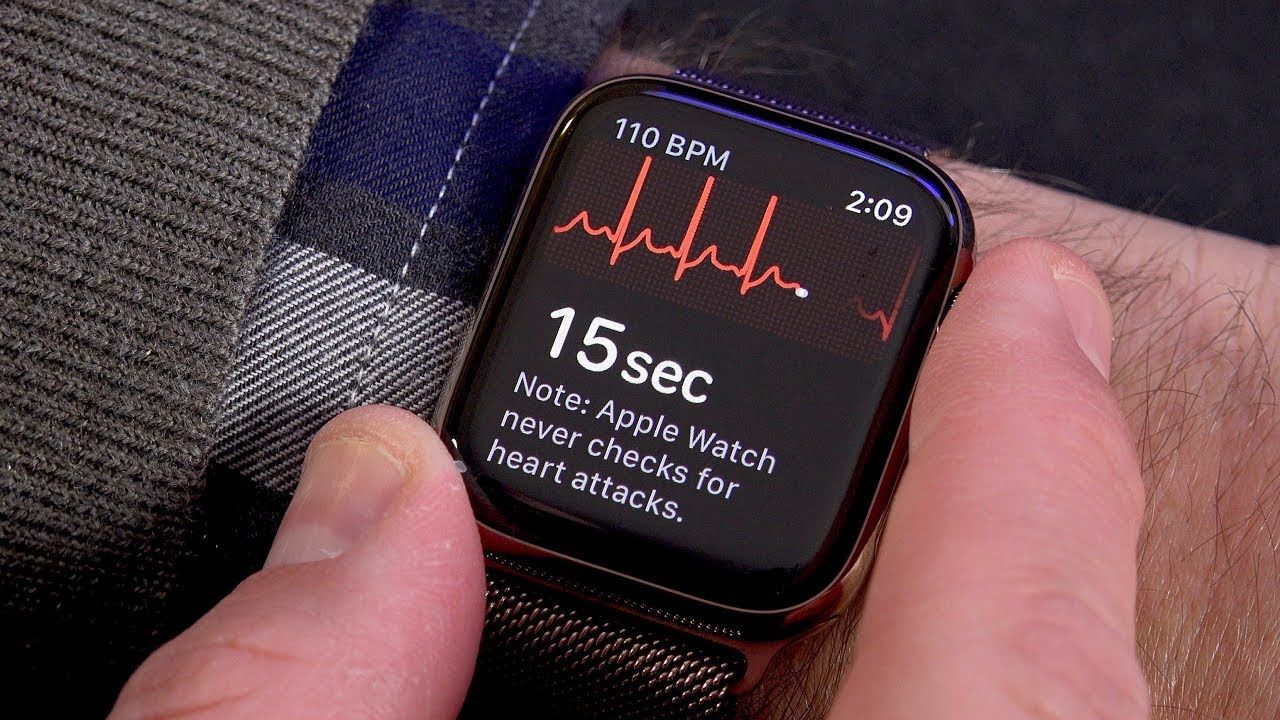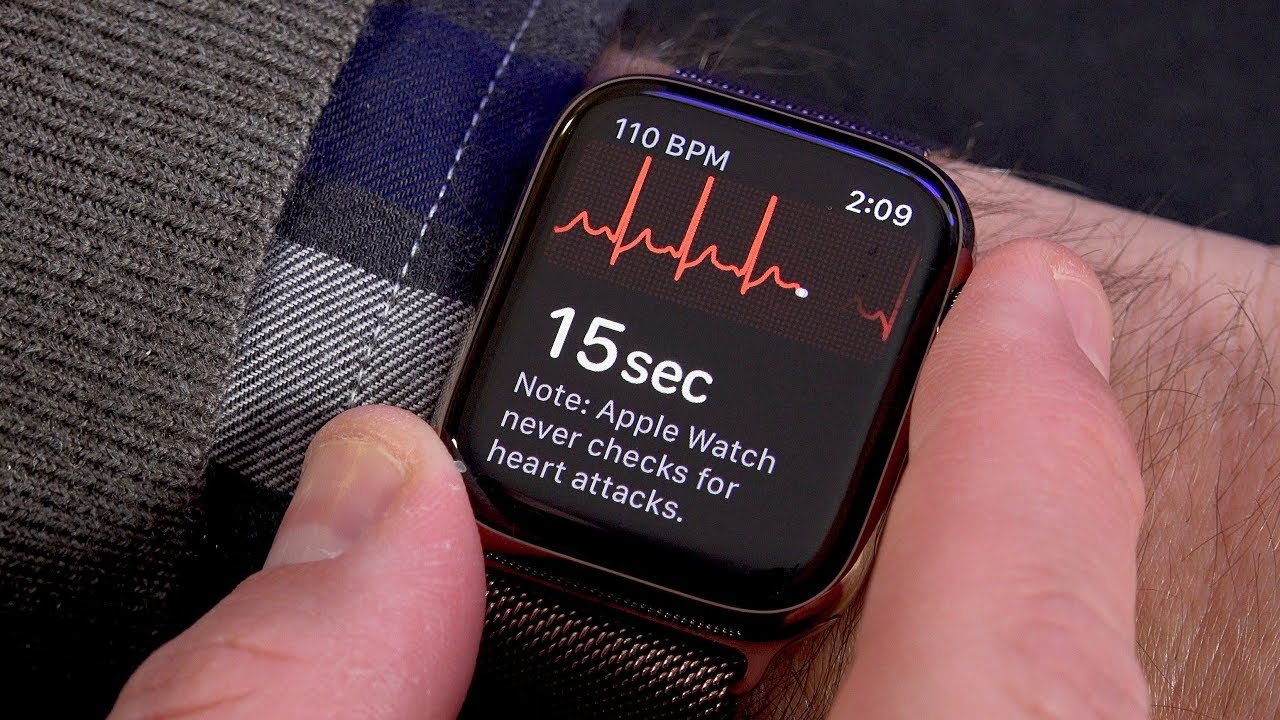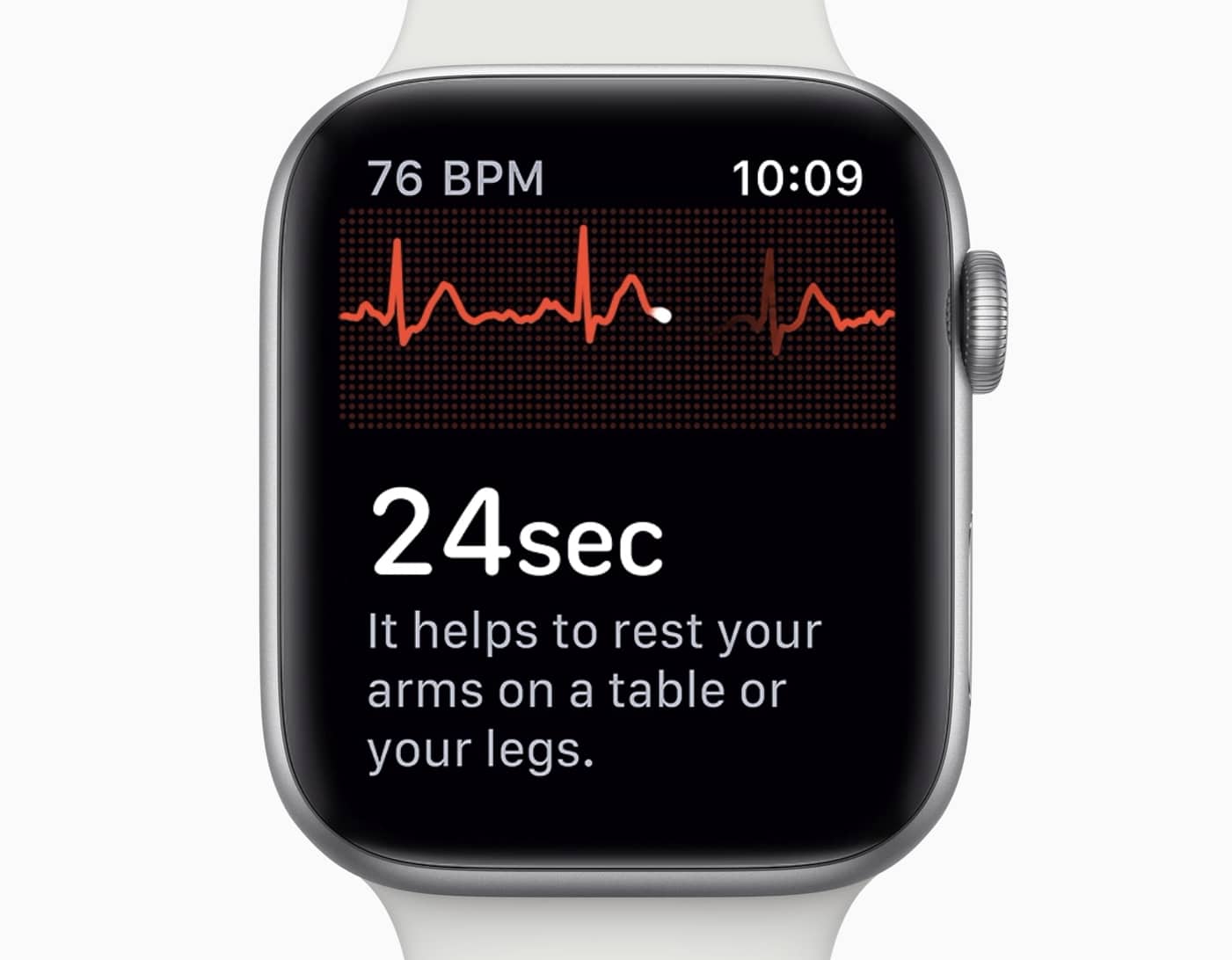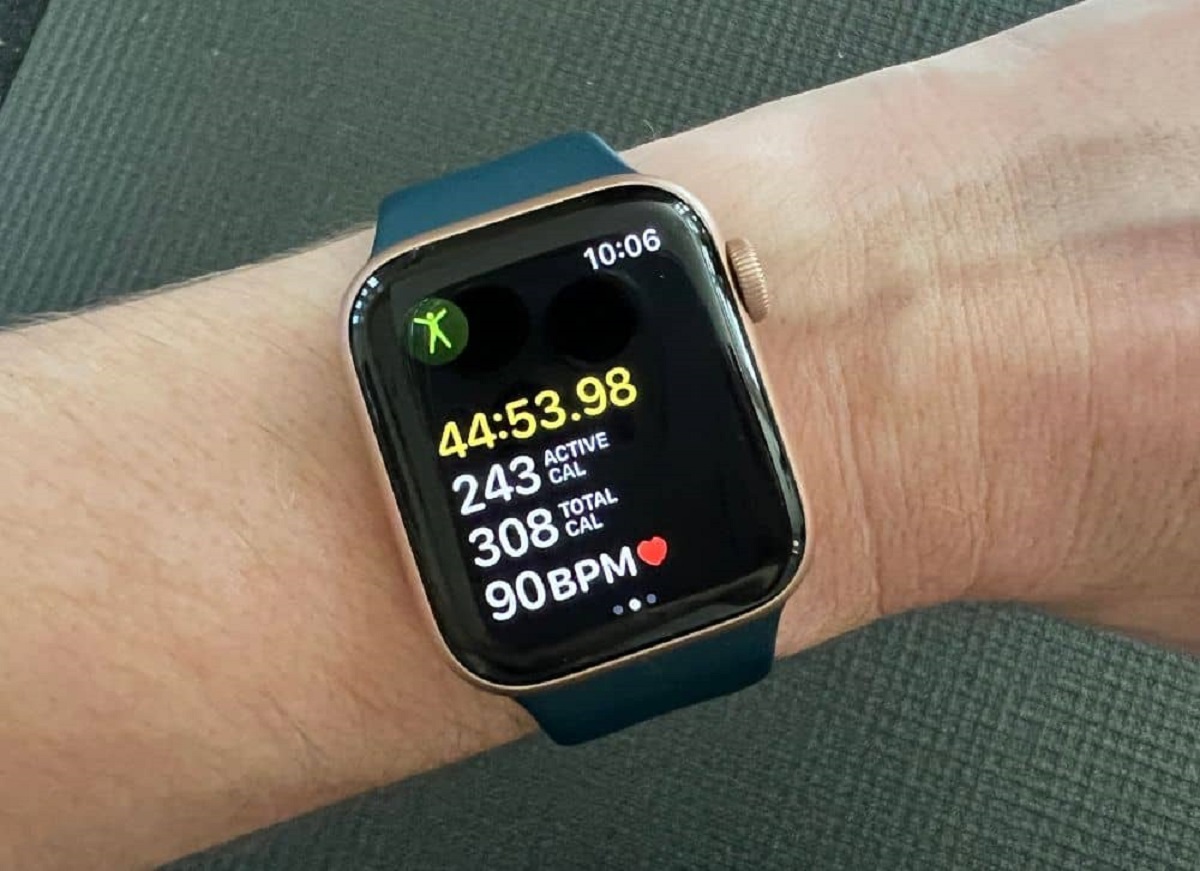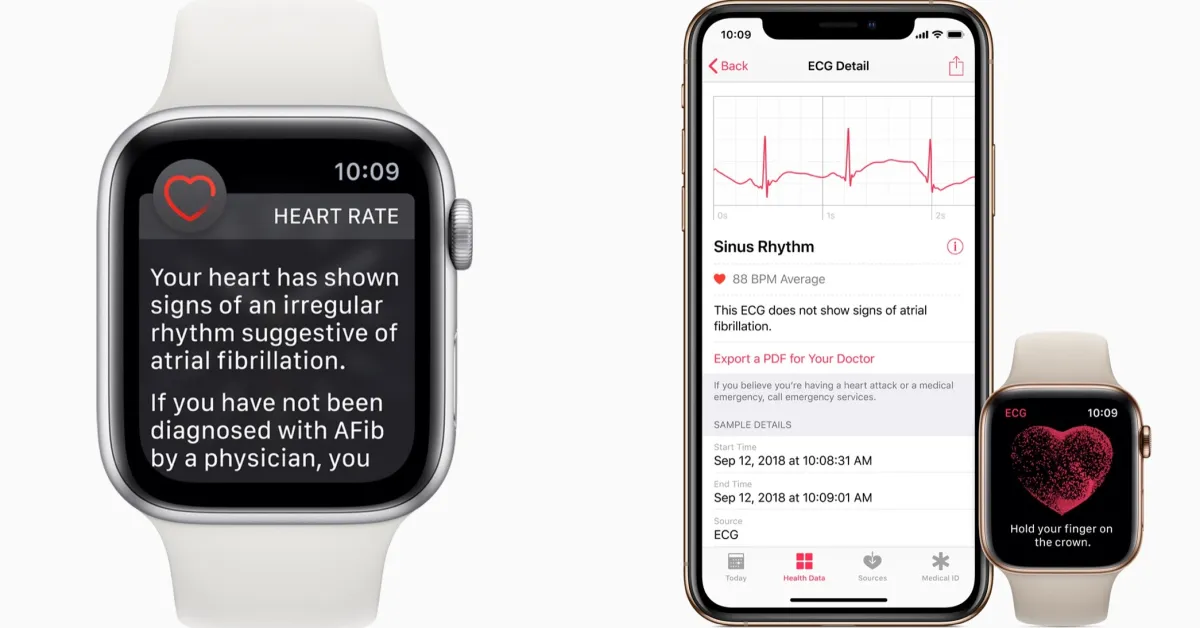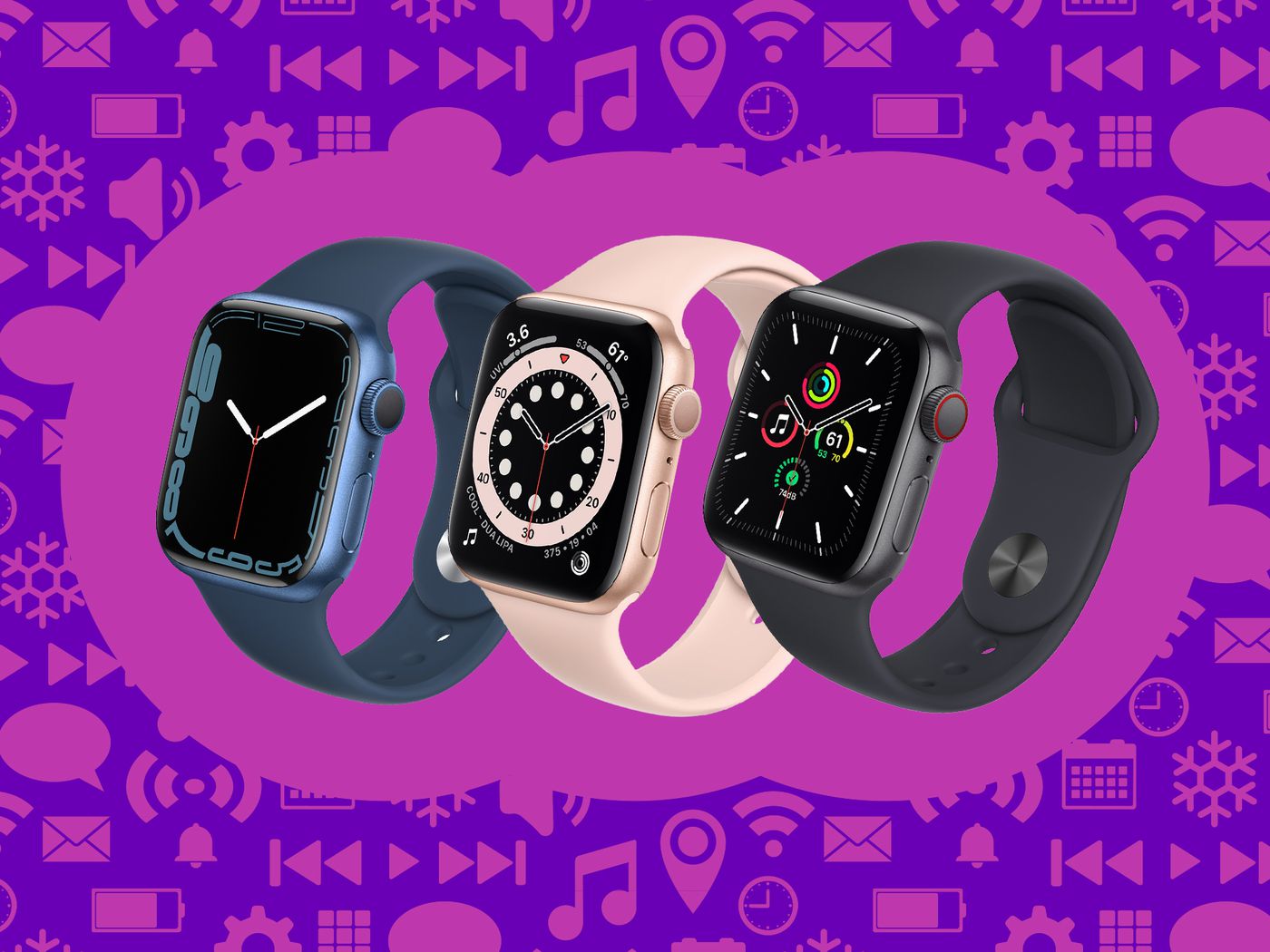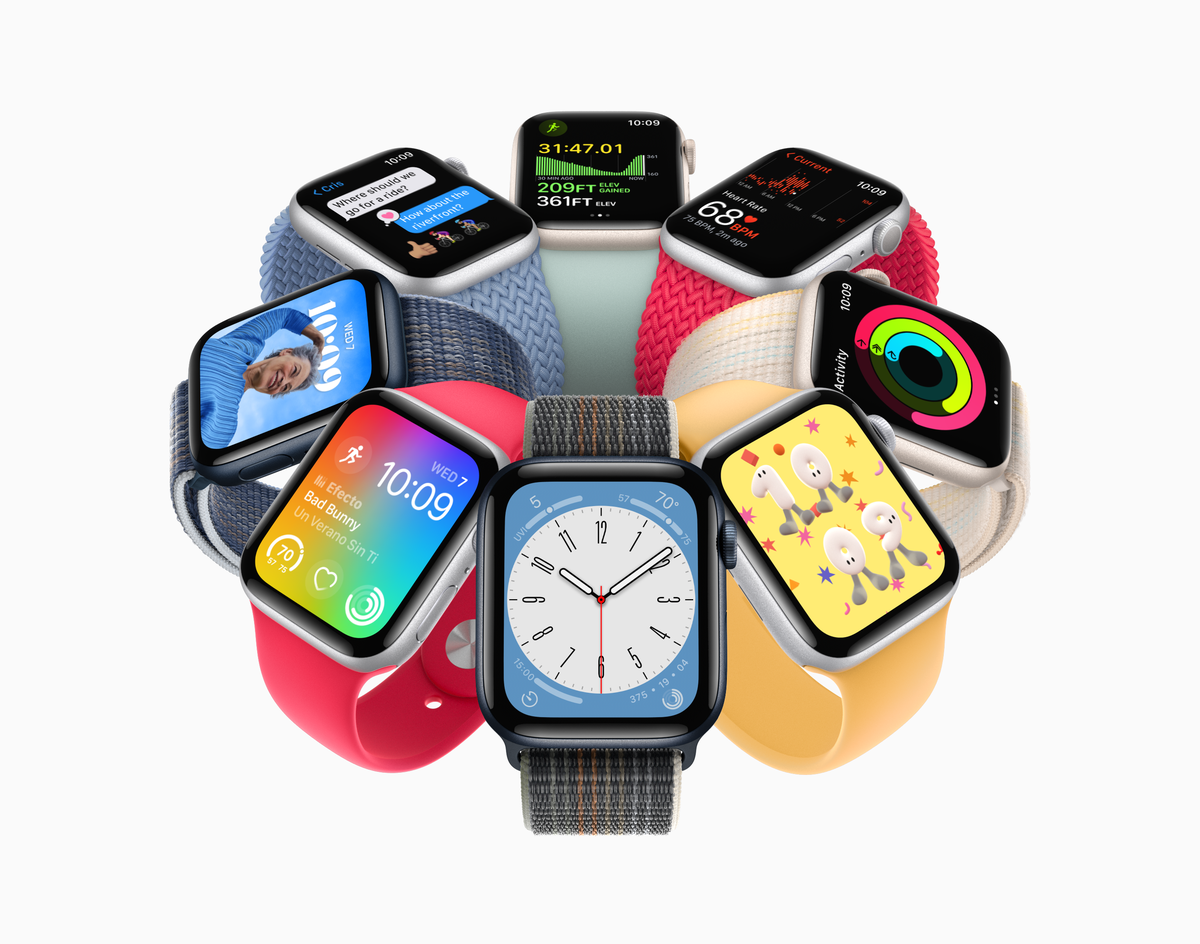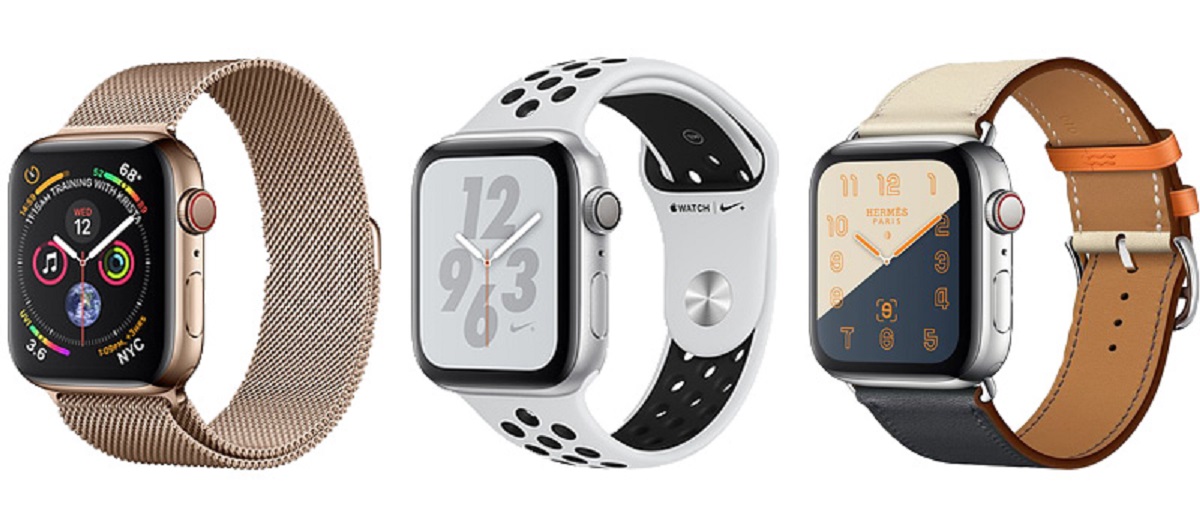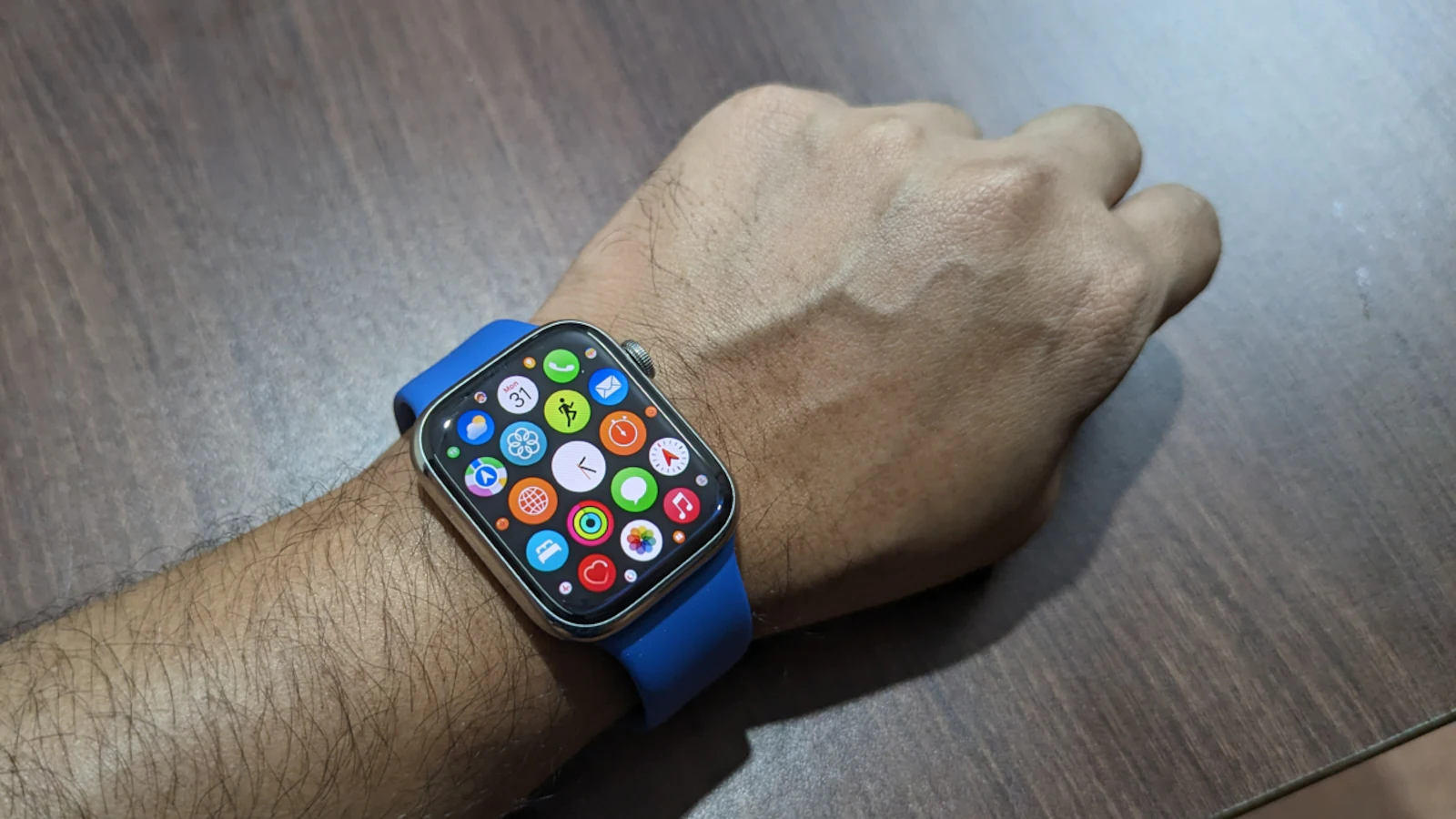Introduction
Welcome to the world of advanced health monitoring on your wrist! The Apple Watch has introduced a groundbreaking feature that allows users to perform an Electrocardiogram (ECG) right from their wrists. This incredible technology has revolutionized how we track and monitor our heart health, making it more accessible and convenient than ever before.
An ECG, also known as an EKG, is a medical test that records the electrical activity of your heart. By analyzing the electrical impulses produced during each heartbeat, an ECG can provide valuable insights into your heart’s rhythm and detect any abnormalities. Traditionally, ECGs were only available in medical facilities, requiring specialized equipment and trained professionals. However, with the introduction of the ECG feature on the Apple Watch, you can now perform this test in the comfort of your own home or on the go.
The ability to conduct an ECG on your Apple Watch brings numerous benefits. Not only does it allow for easy and convenient monitoring of your heart health, but it also empowers you to take proactive steps towards maintaining a healthy lifestyle. By being aware of any irregularities or potential issues, you can seek medical attention in a timely manner and reduce the risks associated with various heart conditions.
In this article, we will guide you through the process of setting up the ECG feature on your Apple Watch, explain how to perform an ECG correctly, and explore the interpretation of your results. We will also discuss the limitations of the Apple Watch ECG and answer some frequently asked questions. So let’s dive in and discover how you can harness the power of your Apple Watch to take control of your heart health!
What is an ECG?
An Electrocardiogram (ECG) is a diagnostic test that measures and records the electrical activity of the heart. The electrical signals generated by the heart’s muscle cells as they contract and relax are picked up by electrodes attached to the skin. These signals are then converted into a visual representation called an electrocardiogram, which can be analyzed by healthcare professionals to assess the heart’s rhythm and function.
The ECG is a fundamental tool for diagnosing various heart conditions, including arrhythmias, coronary artery disease, and heart attacks. It helps identify abnormalities in the rate, rhythm, and structure of the heart, allowing healthcare providers to make informed decisions regarding treatment and management.
During an ECG, a series of sensors or electrodes are placed on specific locations on the chest and limbs. These electrodes measure the small electrical currents generated by the heart’s activity and transmit them to a machine or device that records the signals. The resulting ECG tracing showcases several distinct waveforms, each representing a specific phase of the cardiac cycle.
The different components of an ECG tracing include:
- P wave: Represents the electrical activity associated with atrial depolarization (contraction).
- QRS complex: Reflects the electrical impulses traveling through the ventricles, indicating ventricular depolarization.
- T wave: Represents ventricular repolarization, when the heart muscle is preparing for the next contraction.
Healthcare professionals analyze these waveforms, along with other characteristics of the ECG, to detect irregularities or abnormalities in the heart’s electrical activity. These insights are crucial in guiding diagnosis, treatment, and ongoing management of cardiac conditions.
With the advent of the ECG feature on the Apple Watch, individuals now have the ability to perform a basic version of this test right from their wrists. While it may not provide the same level of detail as a professional medical-grade ECG, it can still offer valuable information to help track and monitor your heart health.
Benefits of Doing an ECG on Apple Watch
The integration of the ECG feature on the Apple Watch brings several benefits to users who are conscious about their heart health. Here are some of the advantages of performing an ECG on your Apple Watch:
- Convenience: One of the key advantages of the Apple Watch ECG is the convenience it offers. Instead of scheduling an appointment, traveling to a medical facility, and undergoing the ECG test, you can perform a basic ECG right from your wrist, anytime and anywhere. This accessibility empowers you to take charge of your heart health on your terms.
- Early Detection of Potential Issues: Engaging in regular ECG monitoring allows for the early detection of potential heart-related problems. By spotting any irregularities or abnormalities in your heart’s electrical activity, you can seek appropriate medical attention promptly. Early detection and intervention can significantly improve outcomes and prevent complications.
- Tracking Heart Health Trends: By performing frequent ECGs on your Apple Watch, you can track your heart health trends over time. This allows for better awareness and understanding of your heart’s rhythms and patterns. You can identify any emerging patterns, triggers, or causes for concern, helping you make more informed decisions about your lifestyle and treatment options.
- Alerting for Emergency Situations: In some cases, the Apple Watch ECG can provide insights that may indicate a potential emergency situation, such as atrial fibrillation (AFib) or irregular heart rhythms. These alerts can prompt you to seek immediate medical attention, potentially preventing more severe complications.
- Engagement in Personalized Heart Health: The ability to monitor your heart health through the Apple Watch ECG creates a sense of engagement and personal responsibility for your well-being. By actively participating in the monitoring process, you become more invested in making positive lifestyle choices and seeking appropriate medical care.
It is important to note that the Apple Watch ECG is not a substitute for professional medical advice or a comprehensive medical-grade ECG. It serves as a screening tool and a means of promoting self-awareness and proactive healthcare. If you have any concerns or receive abnormal ECG results, it is always recommended to consult with a healthcare professional for further evaluation and guidance.
How to Set Up the ECG Feature on Your Apple Watch
Setting up the ECG feature on your Apple Watch is a straightforward process. Follow these steps to get started:
- Ensure Compatibility: Check that you have an Apple Watch Series 4 or later, as the ECG feature is not available on earlier models.
- Update to the Latest Software: Make sure both your Apple Watch and iPhone are running the latest version of their respective operating systems. This will ensure that you have access to the ECG feature.
- Open the Health App: On your iPhone, open the Health app, which comes pre-installed on your device.
- Set Up Health Records: If you haven’t already done so, set up your Health records in the Health app. This includes adding your personal details, medical ID, and any relevant health information.
- Enable ECG: In the Health app, go to “Browse” and select “Heart.” Under “Electrocardiograms (ECG),” tap on “Set Up ECG App.”
- Follow On-screen Instructions: The app will guide you through the setup process, including providing information about the ECG feature and obtaining your consent.
- Place Your Finger on the Digital Crown: Once the setup is complete, open the ECG app on your Apple Watch. Rest your arm on a table or other stable surface, and place your index finger on the Digital Crown. Make sure your fingertip covers the crown completely.
- Start the ECG: Tap the “Start” button in the ECG app on your watch, and keep your finger on the Digital Crown for 30 seconds. During this time, the app will be capturing your heart’s electrical activity.
- View and Save the Results: Once the ECG recording is complete, you can view the results on your Apple Watch and iPhone. You can also save the results as a PDF file and share them with your healthcare provider if needed.
Remember, the ECG feature on the Apple Watch is not a substitute for professional medical advice or diagnosis. It is important to consult with a healthcare professional for a comprehensive assessment of your heart health if you have any concerns.
The Proper Way to Perform an ECG on Apple Watch
Performing an ECG on your Apple Watch requires following a few simple steps to ensure accurate results. Here’s the proper way to perform an ECG on your Apple Watch:
- Open the ECG App: On your Apple Watch, locate the ECG app and open it. This app is represented by a white icon with a red heart waveform.
- Rest Your Arm: Place your arm on a stable surface, like a table or armrest, to ensure steady positioning throughout the ECG recording.
- Position Your Finger: With your Apple Watch on the wrist of the desired arm, use your free hand to hold the Digital Crown. Place your fingertip gently but firmly on the Digital Crown of the watch. Ensure that your finger covers the entire crown to establish a proper connection.
- Start the ECG Recording: Tap on the “Start” button within the ECG app to initiate the recording process. Maintain the position of your finger on the Digital Crown throughout the 30-second recording period.
- Stay Still and Relaxed: It’s crucial to remain calm, still, and relaxed during the entire recording process. Any movement or muscle contraction can interfere with the accuracy of the results. Take slow, deep breaths to help maintain a steady heart rate.
- Wait for the Completion: After 30 seconds, the ECG recording will be complete. You will receive a notification on your Apple Watch indicating that the recording is finished.
- Review Your Results: Open the ECG app to view and analyze your ECG results. The app will display a visual representation of your heart’s electrical activity, including any irregularities or anomalies detected.
- Save and Share: If desired, you can save the ECG results as a PDF file and share them with your healthcare provider for further analysis and evaluation.
It’s important to note that while the Apple Watch ECG feature offers convenience and accessibility, it is not a replacement for professional medical advice or diagnosis. If you have any concerns or receive abnormal ECG results, it is recommended to consult with a healthcare professional for proper evaluation and guidance.
Interpreting Your ECG Results
Interpreting your ECG results is essential to understand the health of your heart. While the ECG feature on the Apple Watch provides you with valuable insights, it’s important to remember that it is not a substitute for a professional medical evaluation. Here are some key points to consider when interpreting your ECG results:
- Normal Sinus Rhythm: A normal ECG result shows a consistent rhythm, with a regular heart rate and proper timing of electrical impulses. This indicates that your heart is functioning within a healthy range.
- Atrial Fibrillation (AFib): AFib is a common arrhythmia characterized by irregular and rapid heartbeats. If your ECG results indicate AFib, it’s important to consult with a healthcare professional for further evaluation and management.
- Other Arrhythmias: ECG results may reveal other types of arrhythmias, such as bradycardia (slow heart rate) or tachycardia (fast heart rate). These abnormalities may require additional medical attention and intervention.
- Artifacts: Sometimes, ECG readings may contain artifacts, which are false or misleading signals caused by movement, poor electrode contact, or interference. Taking steps to minimize artifacts, such as ensuring a stable position during the recording and good skin contact with the electrodes, can improve the accuracy of your results.
- Trends over Time: It’s important to track your ECG results over time to identify any patterns or changes. If you notice any persistent abnormalities or irregularities in your results, consult with a medical professional for thorough evaluation and guidance.
- Consult a Healthcare Professional: While the ECG feature on the Apple Watch can provide valuable information, it’s crucial to remember that it does not replace medical advice or a comprehensive evaluation by a healthcare professional. If you have concerns about your ECG results or any symptoms, it’s best to consult with a qualified healthcare provider for a thorough assessment.
Proper interpretation of your ECG results is key to understanding your heart’s health. By combining your ECG findings with a medical evaluation, you can gain a comprehensive understanding of your heart’s rhythm and take appropriate steps to manage your cardiovascular health.
Understanding the Limitations of Apple Watch ECG
While the ECG feature on the Apple Watch is a remarkable advancement in health monitoring technology, it’s crucial to be aware of its limitations. Understanding these limitations will help you use the feature more effectively and make informed decisions about your heart health. Here are some key aspects to consider:
- Basic Screening Tool: The Apple Watch ECG is designed to provide a basic screening of your heart’s electrical activity. It is not a substitute for a professional medical-grade ECG or a comprehensive evaluation by a healthcare professional.
- Not Suitable for All Heart Conditions: The ECG feature on the Apple Watch is primarily designed to detect atrial fibrillation (AFib). It may not be as effective in detecting other heart conditions or more complex arrhythmias. It’s important to consult with a healthcare professional if you have concerns about specific heart conditions.
- False Positives and Negatives: Like any medical test, the Apple Watch ECG may produce false positives or false negatives. It’s essential to interpret the results in conjunction with a medical evaluation to get a more accurate assessment of your heart health.
- External Factors: External factors, such as motion, poor electrode contact, and interference, can impact the accuracy of the ECG readings. Taking measures to minimize artifacts and ensuring a stable position during the recording can help improve the reliability of the results.
- Individual Variations: ECGs can vary based on the individual’s anatomy, physical condition, and other factors. Factors such as age, sex, underlying health conditions, and medications can influence the interpretation of the results. Consider these factors in discussions with healthcare professionals.
- Medical Advice: The Apple Watch ECG should not be used as a substitute for professional medical advice. It is essential to consult with a qualified healthcare professional for a comprehensive assessment of your heart health, especially if you have any symptoms or concerns.
By understanding the limitations of the Apple Watch ECG, you can use the feature as a tool for proactive heart health monitoring. It can provide valuable insights and guide conversations with healthcare professionals, leading to more informed decisions and a better understanding of your cardiovascular well-being.
Frequently Asked Questions (FAQs)
Here are answers to some commonly asked questions about using the ECG feature on the Apple Watch:
- Is the ECG feature available on all Apple Watch models?
- How often should I perform an ECG on my Apple Watch?
- Can the Apple Watch ECG detect heart attacks or other serious cardiac conditions?
- Can I rely solely on the Apple Watch ECG results for my heart health?
- Can I share my Apple Watch ECG results with my healthcare provider?
- Can the Apple Watch ECG replace traditional medical-grade ECGs?
- Should I consult a healthcare professional if I receive abnormal ECG results on my Apple Watch?
No, the ECG feature is available on Apple Watch Series 4 and later models.
The frequency of performing an ECG on your Apple Watch depends on individual factors and any recommendations provided by your healthcare professional. It is typically recommended to follow the guidance of your doctor regarding the frequency of ECG monitoring.
No, the Apple Watch ECG is not designed to detect heart attacks or other serious cardiac conditions. It primarily screens for atrial fibrillation (AFib), but it may not detect other heart conditions or complex arrhythmias. If you experience symptoms of a heart attack or any severe cardiac issues, seek immediate medical attention.
No, the Apple Watch ECG results should not be relied upon solely for heart health assessment. They should be used as a screening tool and a means of promoting self-awareness. It is important to consult with a healthcare professional for a comprehensive evaluation, especially if you have any concerning symptoms.
Yes, you can save your ECG results as a PDF file and share them with your healthcare provider if needed. Sharing the results can provide additional context to your medical evaluation.
No, the Apple Watch ECG is not a substitute for a professional medical-grade ECG. It provides a more basic screening of your heart’s electrical activity. A comprehensive medical evaluation with professional-grade ECG equipment is necessary for a more in-depth assessment.
If you receive abnormal ECG results or have any concerns about your heart health, it is important to consult with a healthcare professional. They can provide a thorough evaluation, interpret the results accurately, and guide you on the appropriate course of action.
Remember, the Apple Watch ECG is a tool that can assist with proactive heart health monitoring. It is not a substitute for professional medical advice or diagnosis. Always consult with healthcare professionals for personalized guidance and recommendations regarding your heart health.
Conclusion
The ECG feature on the Apple Watch has revolutionized how we monitor and track our heart health. With the ability to perform an ECG right from your wrist, you have greater convenience and accessibility to important insights about your heart’s electrical activity. However, it’s crucial to understand the limitations of this feature and use it as a tool for proactive monitoring rather than a replacement for professional medical advice.
By setting up the ECG feature correctly, following the proper steps to perform an ECG, and interpreting the results with the guidance of healthcare professionals, you can gain valuable information about your heart’s rhythm and detect any potential issues. This empowers you to take charge of your heart health, make informed decisions, and seek appropriate medical attention when needed.
Remember, the Apple Watch ECG is not a comprehensive medical-grade ECG, and it may have false positives or negatives. It is always recommended to consult with a healthcare professional for a comprehensive evaluation if you have concerns about your heart health or receive abnormal ECG results.
With the Apple Watch ECG feature, you have a powerful tool at your disposal to monitor your heart health proactively. Utilize this feature in conjunction with professional medical guidance, engage in regular check-ups, adopt a healthy lifestyle, and prioritize your cardiovascular well-being. Together, we can enhance our understanding of our heart’s health and work towards a healthier future.







